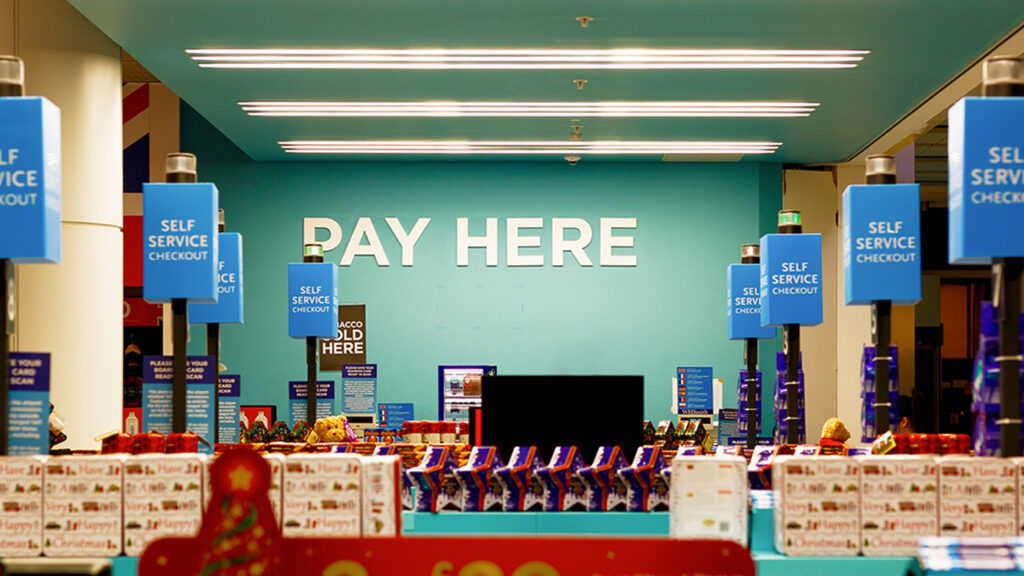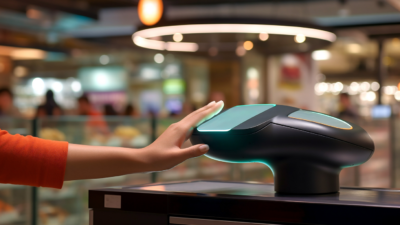Amazon Go paved the way for retailers like CVS, Wegman’s, and Walmart to add self-checkout in-store as an added convenience. The machines are a hybrid of traditional and contactless checkout points, where consumers bypass human interactions in favor of AI-programmed prompts. Self-checkout, widely adopted by grocery stores during the pandemic, provided a contactless option for the concerned consumer and streamlined the process by allowing consumers to scan and bag their goods. The self-checkout market is anticipated to grow by 13% in the next five years, yet there is speculation that the platform may have peaked.
Time-Saver or Time-Waster
Consumer reactions are mixed and depend on the store and the situation. Most consumers are inclined to use self-checkout, with 60% preferring self-checkout over cashier-assisted options, citing convenience and ease of use. And despite 85% of consumers firmly believing self-checkout is faster than waiting in line, some shoppers find the kiosks impersonal and more hassle than a time-saver.
We spoke to a handful of consumers, and most applauded the convenience. A shopper mom uses self-checkout strategically, preferring to “check the line length and select the one with the least number of people. Some days, that’s the cashier, and other times its’ the self-checkout.” Another shopper said the self-service kiosks make them “feel more in control of the checkout process.” At the same time, another questioned the hygienic quality of the self-checkout kiosks: “On the rare occasions when I’ve used self-service, nobody comes around and cleans anything. Like everyone else, you’re putting your stuff down on the reader, but I don’t see anybody cleaning it afterward. Unfortunately, that seems to become less of a priority these days.”
Several of the folks we spoke to were concerned about the displacement of store employees with the addition of advanced technologies. “I always worry that people might lose their jobs because of the kiosks, especially those who have been a cashier for a long time.” And another shared how the daily interactions at the cashiered checkouts are “a golden opportunity to engage with another human being,” something we’ve been lacking in recent years.
The Age of Convenience
The latest sector to implement self-checkout kiosks is convenience stores. Millennials are the most frequent c-store channel shoppers. Most c-store shoppers will likely spend less than four minutes in-store buying a single item. Some customers might not even bother to wait if a store has a long line. On the other hand, customers don’t have to wait to use a self-checkout kiosk. They can complete their transaction at their own pace and walk away when finished. As we reported earlier this year, c-store retailers continue to proactively add benefits like drive-thru and curbside collection to extend high-level conveniences to their consumers.
It’s All About That Tech
Self-checkout kiosks vary from store to store. Some require the consumer to do all the heavy lifting, from scanning the product SKU to bagging items. Other models leverage advanced AI and video scanning to minimize the checkout experience altogether. For many shoppers, combining these new-fangled technologies creates a stress-free shopping experience.
Kroger has reportedly moved beyond their self-checkout pilot to integrate artificial intelligence (AI) and computer vision technology into its program. The system comes with a fail-safe that alerts shoppers if an item doesn’t scan successfully and prompts consumers to self-correct. While other grocery stores, like Wegmans, are scaling back on their scan-and-go investments due to profit loss and theft. Around 90% of consumers want self-checkout machines more intelligent, citing automatic product identification as a wish list item. Uniqlo might have the answer with its self-checkout lane, which seamlessly connects its mobile app to initiate an in-store transaction. Shoppers place selected merchandise into a kiosk that is scanned for radio frequency identification (RFID) tags, which allows the machine to identify each item and calculate the total amount. Consumers can either pay with a credit card or digitally with Apple Pay.
 Anjee Solanki
Anjee Solanki
“Retailers should consider offering hybrid-checkout options to appease multi-generational consumers while monitoring the machine learning advances to determine what model works best for their consumer base and bottom line.”
The Future of Self-Checkout
In the not-so-distant future, self-checkout kiosks may take up even less space. For example, the parent company of 7-Eleven, in collaboration with an undisclosed Japanese tech firm, has rolled out holographic self-checkout stations that offer shoppers a touch-free experience. And surprise Amazon is exploring how to eliminate self-checkout with its Just Walk Out technology. Just Walk Out tech-equipped stores use palm print scanning, credit or debit cards, or an app for entry to create a contactless shopping experience.
Self-checkout technology platforms have evolved, adding artificial intelligence, computer vision, and cloud technology features that make them more accessible to retailers. Retailers should consider offering hybrid-checkout options to appease multi-generational consumers while monitoring the machine learning advances to determine what model works best for their consumer base and bottom line.





 Nicole Larson
Nicole Larson